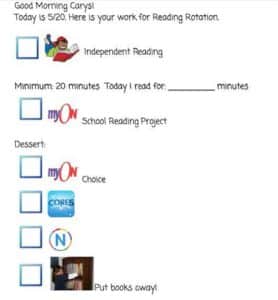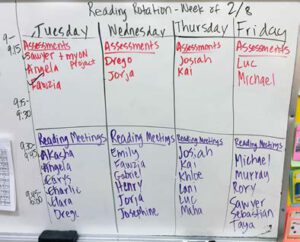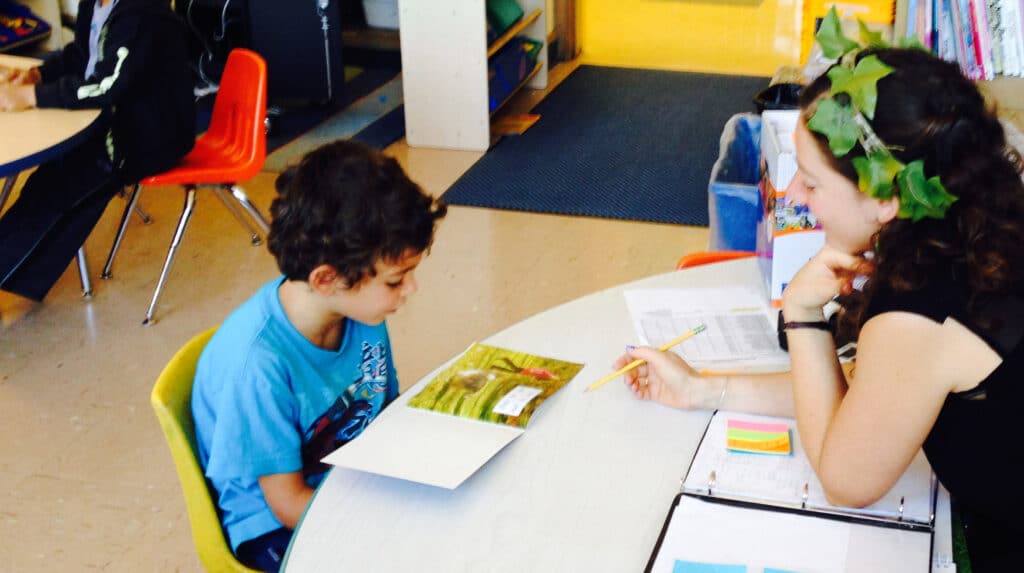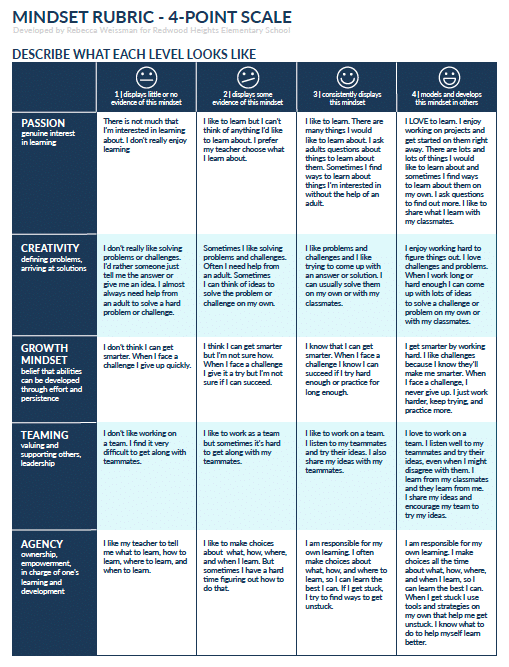The new report “How to create higher performing, happier classrooms in seven moves: A playbook for teachers” tells stories of teachers who improved student engagement and academic results by introducing seven specific, practical moves into their classrooms that replicate the successes of top managers in cutting-edge workplaces. For the next three months, I’ll be doing deep dives into each of these important moves.
The fourth move for creating a dynamic classroom is to give feedback.
In schools, the term “feedback” is often associated either with formal assessments and grading protocols for students or high-stakes performance reviews for teachers. Neither of these is what we mean when we use the term. The idea of giving feedback is more akin to a coach who watches his or her players from the sidelines, studies them at practice, reviews the post-game footage, and then meets with them to talk about ways that they can improve. Feedback can take the form of one-on-one meetings, small-group sessions with hand-picked groups that need a particular feedback message, and written notes and comments—all done with the intent to improve performance, not to reward or punish. It can include both the positive (praise) and the constructive (ideas for improvement). Teachers can give various types of feedback, including academic feedback, project-based feedback, and mindset feedback.
During the 2015–16 school year, Rebecca Weissman, a 1st/2nd-grade teachers at Redwood Heights Elementary School in the Oakland Unified School District, wanted to spend more time giving students individual feedback. Her goal was to spend more time one-on-one with students and be a good coach to each one. Rebecca already had several structures playing to her advantage to accomplish this feat.

First, Rebecca had already implemented an Individual Rotation model of blended learning in which she gave her students a daily list of learning tasks personalized to their needs for the 70-minute reading block. Creating these lists each night was a lot of work, but Rebecca did it because they let her tailor the tasks to students’ individual needs and because it gave her students more control. She allowed them to complete the tasks in the order they chose and to allocate their own time, within bounds.
Her Individual Rotation model for reading allowed for a lot of flexibility. She was not fixed to delivering a guided-group station, say, every 25 minutes. She had the flexibility to call students to her desk to meet with them individually or in small groups as necessary. She usually used one-on-ones to meet with students about their reading progress.

The process began when students signed up for a Literably assessment—an online service that listens to students read and generates an analysis of accuracy, rate, and comprehension. After they completed the assessment, and if they had leveled up, students got to meet with Rebecca one-on-one for her to congratulate them, give them a star for the reading chart, discuss their next goal, and give them a high five. The whole thing took three minutes and felt positive and relevant.
Second, Rebecca already had a tradition of putting on her “off-limits crown” when she was meeting with an individual student. The crown, a headband of green ivy, signified that she was giving a student her full attention and that others needed to hold their questions for after. This simple system carved out space for Rebecca to give individual coaching, even in a busy classroom of young students.

Third, a couple of years earlier, Rebecca had held individual reading conferences with students using the Lucy Calkins method, which involves meeting one-on-one with students for five to seven minutes and having a conversation with them about the text they are reading, something they are doing well as a reader, and a reading strategy or technique they should consider implementing. During the 2015–16 school year, Rebecca reinstated this practice because she realized that it supported her feedback goal and amplified her coaching ability. She used it with students who were below reading level, although Lucy Calkins recommends the practice for everyone. Rebecca reflected that this conferring method takes a lot of practice because it requires teachers to diagnose reading challenges and suggest a relevant strategy on the spot, but she feels that it is a highly responsive and personalized way to provide academic feedback.
Additionally, Rebecca developed two other feedback structures to improve her function as a coach. The first was editor conferences. During the 2015–16 school year, she created a project-based learning activity, the animal project, in which she assigned each student to a four-person group and invited them to choose an animal to study. Their task was for each person to write a book about the group’s animal. Rebecca’s personal goal was to see if she could release control to her students and refrain from micromanaging them through their projects. During this project, Rebecca discovered a windfall of time to use at her discretion, and she decided the best use of it was to meet one-on-one with students for “editor meetings.” She explained to her students that they each got to meet with her as if she were their real-life book editor. She called them to her desk one at a time and provided academic and project-specific feedback. She helped them improve their writing by asking questions that went beyond the text, such as “What will your readers think when they read this sentence? What conclusions will they draw?”
The second new feedback opportunity was meeting individually with her students a few times throughout the school year to co-assess their mindset goals using a mindset rubric (included below). During these meetings, Rebecca told the students about each box on the rubric and then asked them to determine which box they thought reflected their status. Rebecca was able to complete a full round of co-assessments in one week; she met with seven students per day for seven minutes each. She found time for these one-on-one meetings either during reading rotations or while the other students were at music class.

Looking back, Rebecca said that adding new feedback structures led her to think more about the usefulness and impact of small-group lessons, in which she did guided reading and math word problems, compared to one-on-one feedback sessions. She realized that the one-on-ones were a much more effective structure for her to understand a student’s precise, at-the-moment needs and give tailored feedback. She still found value in the small-group lessons, but implementing the feedback structures described above opened her eyes to how effective one-on-ones were for helping her be a good coach.
To learn how teachers at Alpha Public Schools and Khan Lab School also gave feedback, check out the rest of the playbook here: “How to create higher performing, happier classrooms in seven moves: A playbook for teachers.”
For more, see:



